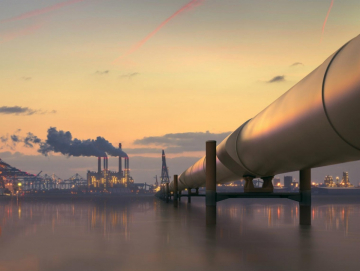Even in EHS, technology’s been stealing the spotlight lately.
Throughout all the buzz around process automation, augmented reality visualizations, drone field data collection and renewable tech, it’s easy to get excited. (We certainly are.)
But let’s recognize those who are quietly taking these technological advances and creating real-world solutions out of them. As a sense of ecological urgency continues to rise, we wanted to celebrate those who wholly dedicate their minds to steering our world towards a more sustainable future.
Just in time for Engineers Week, join us as we take a look at how environmental engineers help us progress in a responsible way.
What Do Environmental Engineers Do?
According to the Department of Civil Engineering at Louisiana State University, the definition of environmental engineering is suitably noble: “the application of engineering principles to improve and maintain the environment for the protection of human health, for the protection of nature's beneficial ecosystems, and for environment-related enhancement of the quality of human life.”
Those tenets are really what’s at stake. Without environmental engineers, we’d have a gap between concept and actual application, leaving a chasm between problem and solution.
Throughout history, environmental engineers have been solving the challenges that enable us to function as a society. From waste management to the efficient utilization of natural resources to mitigating pollution and much, much more, the scope of their responsibilities has always been extremely broad.
“Environmental engineering in the consulting world is a hard field to explain to people because I do so many different things on a day-to-day basis,” says Layne Kortbein, environmental engineer and project professional for Antea Group. “I focus on environmental remediation and help clean up petroleum or chemical spills large and small – whether that be a spill of 300,000 gallons or 10 gallons. A lot of the projects I work on use remediation systems to treat and recover whatever was spilled, and I come in to help monitor the system effectiveness and troubleshoot whenever there’s an issue.”
This is just one of many specializations within the field of environmental engineering. Now, more than ever before, their work is crucially important; both on the macro scale, as they’re helping humanity veer away from creating an inhabitable planet, and on the industry scale, as we’re seeing a trend of business leaders increasingly value the importance of environmental engineering as ESG criteria become more prominent.
What Does it Take to Be an Environmental Engineer?
Given the far-reaching nature of the job, environmental engineers are often adept in chemical engineering, math, fluid dynamics, geography, geology, and/or hydrology. They are not only required to design solutions that work, but solutions that are cost-viable, sustainable, and that fit within larger systems. Despite different sub-domains or specializations, it's not uncommon for engineers to share a passion for pure problem-solving.
“One of my favorite aspects of the job is the sheer variety of work.” says Dean Krebs, one of Antea Group’s senior engineers. “Every day I do something different and usually it involves sitting back and figuring out how to solve a problem. It can be challenging because some of those problems require quite a bit of sitting back! Applying engineering principles to unique project situations and geographic settings can be very challenging, and some problems may have never been solved before!”
Layne really enjoys the diversity of day-to-day work as well. “I love that I am able to work with so many different clients which allows for a wide array of problem types, sizes, and complexity,” she says. “Working in a fast-paced environment with multiple projects ensures that I never get bored!”
What Are Some Challenges Facing Environmental Engineers Today?
One major focus of modern environmental engineering has been the detection, mitigation, or remediation of pollutants. That means devising solutions to reduce carbon footprint throughout the industrial sector, which itself is an extremely comprehensive task. There are also challenges when it comes to public infrastructure, as environmental engineers seek ways to sustainably grow cities while keeping efficiency and environmental fallout at the forefront of concern.
Of course, like most fields, environmental engineering continues to be enhanced by technological advancements. “Technology has of course really changed since the ‘90s,” Dean observes. “We used pens and paper where today everything is trending towards automation.”
Despite the immense scope and depth of the profession, it is, above all, a very relevant role.
At the very heart of environmental engineering is the same question that we as a species need to be asking: “How can we better our lives while protecting our environment?”
If we’ve been able to transition to high-tech, low-carbon lifestyles in the next decade, we know who to thank.
Learn more about scenarios where environmental engineers and consultants put their skills to work by learning about environmental remediation in action across industries.
Related Projects

1.1 Million Under-Budget Regulatory Closure for 30 Petroleum Release Sites

Developing a Permanent Post-Release PFAS Remediation Solution

Acid Release Remediation Results in Over 1.5 Million Dollars Saved

SPCC Regulatory Compliance and Spill Preparedness for a Class I Railroad
Want more news and insights like this?
Sign up for our monthly e-newsletter, The New Leaf. Our goal is to keep you updated, educated, and even a bit entertained as it relates to all things EHS and sustainability.
Get e-NewsletterHave any questions?
Contact us to discuss your environment, health, safety, and sustainability needs today.






